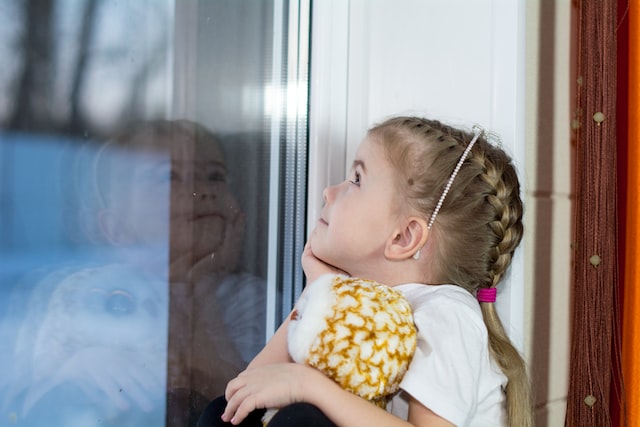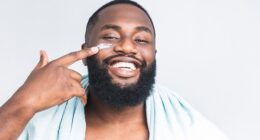Daydreaming and fantasizing are both activities that involve our imagination, but the two should not be confused. Fantasizing is a conscious activity where we actively imagine scenarios or settings and often involves significant details. Daydreaming, on the other hand, is a more passive form of imaginative thinking that generally doesn’t contain as much detail or complexity. Ultimately, daydreaming and fantasizing can provide an enjoyable escape from reality and help us to explore our creative side.
What is daydreaming?
(Photo by Bermix Studio on Unsplash )

Most people think of daydreaming as something that happens when you’re bored, like when you’re stuck in a long line or sitting in class. But daydreaming is actually a very important part of our mental lives. It’s a way for our brains to process information and sort through memories.
Some daydreams are happy and pleasant, while others may be anxious or disturbing. But all daydreams serve a purpose. They help us work through problems and figure out what we really want in life.
What is fantasizing?
(Image by Stefan Keller from Pixabay )

Fantasizing is the act of imagining or creating mental images or scenarios that are not based in reality. It can involve vividly imagining something that is desired or feared, or it can involve creating entirely fictional scenarios that may or may not be based on real-life experiences. Fantasizing can be conscious or unconscious, and it can be driven by a variety of factors, including emotional needs, psychological desires, and external stimuli such as media or social interactions. People often fantasize as a form of escapism or as a way to cope with stress, anxiety, or boredom.
Daydreaming Vs. Fantasizing – Key differences
Daydreaming and fantasizing are similar in that they both involve creating mental images or scenarios that are not based in reality, but there are some key differences between the two:
Focus: Daydreaming often involves a wandering or unfocused mind, with thoughts and mental images coming and going without much control. In contrast, fantasizing tends to be more focused and intentional, with a specific desired outcome or scenario in mind.
Emotional content: Daydreams can be positive, negative, or neutral, and often reflect the emotional state of the person having them. Fantasies, on the other hand, are typically driven by strong emotional desires, such as the desire for love, power, or success.
Realism: Daydreams can be somewhat grounded in reality, reflecting things that the person has experienced or observed. Fantasies, on the other hand, are often completely divorced from reality, involving imagined scenarios that are unlikely or impossible to actually occur.
Overall, daydreaming is often more spontaneous and less intentional than fantasizing, and is often used as a way to pass the time or cope with boredom. Fantasizing, on the other hand, is often more deliberate and goal-oriented, and may be used as a way to cope with unfulfilled desires or difficult emotions.
How to know if you’re daydreaming or fantasizing
There’s a fine line between daydreaming and fantasizing, and it can be hard to tell the difference. Here are some signs that you may be fantasizing:
- You’re daydreaming about something that is highly unlikely or impossible to achieve.
- You’re fixated on a particular fantasy, to the point where it’s all you can think about.
- You’re spending more time thinking about your fantasy than living in the present moment.
- Your fantasy life is more exciting than your real life.
If you find yourself falling into any of these traps, it may be time to snap out of it and start living in the present!
The benefits and dangers of daydreaming
Daydreaming and fantasizing are two very different things. Daydreaming is a healthy way to escape reality and explore your thoughts and feelings. Fantasizing, on the other hand, is an unhealthy way to escape reality and can lead to problems in your life.
Benefits of daydreaming:
- It can help you relax and destress.
- It can boost your creativity.
- It can help you solve problems.
- It can increase your empathy and understanding of others.
- It can provide a much-needed break from reality.
Dangers of fantasizing:
- It can lead to unrealistic expectations.
- It can cause you to miss out on the good things in your life.
- It can make you more anxious and stressed out.
The benefits and dangers of fantasizing
Fantasizing can have both benefits and dangers, depending on how and why it is done. Here are some potential advantages and risks of fantasizing:
Benefits:
- Coping mechanism: Fantasizing can be a healthy way to cope with stress, anxiety, and other difficult emotions. It can serve as a form of escapism that provides temporary relief from real-life problems.
- Boosting creativity: Fantasizing can also stimulate creativity and imagination, which can be helpful in a variety of contexts, from artistic pursuits to problem-solving in business or science.
- Sexual satisfaction: Fantasizing can be a healthy part of sexual exploration and can enhance sexual pleasure and satisfaction, as long as it is done consensually and without harming others.
Risks:
- Distraction: Fantasizing can be so engrossing that it distracts from real-life responsibilities and obligations, such as work, school, or relationships.
- Unrealistic expectations: If fantasizing becomes too detached from reality, it can lead to unrealistic expectations and disappointment when those expectations are not met.
- Addiction: In some cases, fantasizing can become compulsive and addictive, leading to negative consequences such as social isolation, loss of productivity, and impaired mental health.
- Emotional turmoil: Fantasizing can also become a way to avoid dealing with real-life emotions, leading to emotional suppression and turmoil.
Fantasizing can be a healthy and enjoyable activity as long as it is done in moderation and with awareness of its potential risks.
What is the difference between fantasizing and thought?
Fantasizing and thinking are similar in that they both involve mental processes, but there are some key differences between the two.
Thought is a broad term that refers to any mental activity or process, including problem-solving, decision-making, reasoning, and memory recall. It can be conscious or unconscious, and may involve language or other forms of mental representation.
Fantasizing, on the other hand, typically involves mental imagery or sensory experiences that are not based in reality. It often involves imagining scenarios or situations that are unlikely or impossible, and may be driven by emotion or desire.
One way to think about the difference between fantasizing and thinking is that thinking tends to be more focused on the present or future, and is often based on facts or logical analysis, whereas fantasizing is more focused on the imagination and may be driven more by emotions or desires. Additionally, thinking is often more goal-oriented, while fantasizing is often more exploratory and open-ended.
While both thinking and fantasizing are important parts of human cognition and creativity, it is important to distinguish between the two and use them appropriately depending on the situation and goals at hand.
How do I stop fantasizing and daydreaming?
It’s easy to daydream and fantasize when you’re bored or not engaged in what you’re doing. Maybe you’re sitting in a boring meeting at work, or stuck in traffic, or waiting in line at the grocery store. Your mind wanders and before you know it, you’re in another world entirely.
Fantasizing and daydreaming can be fun, but if it’s interfering with your life or preventing you from being present in the moment, it may be time to try to stop. Here are a few tips:
Be aware of when you start to daydream or fantasize. It can be helpful to label it as such in your mind: “I’m daydreaming now.” This can help break the spell and bring you back to the present moment.
Try to focus on something else. If you find your mind wandering, deliberately choose to focus on something else: the task at hand, your breathing, a mantra or affirmation, etc.
Practice mindfulness meditation. This type of meditation can help train your mind to be more present and less prone to wander off into fantasyland.
Get enough sleep! It can be harder to stay focused and present when you’re tired, so make sure you’re getting enough rest each night.
Is fantasizing a disorder?
Most people have experienced daydreaming at some point in their lives. It is a normal phenomenon that usually occurs when someone is bored, tired, or otherwise not fully engaged with their current activity. Fantasizing, on the other hand, is often considered to be a disorder.
Fantasizing can be defined as an obsessive preoccupation with something that is not real. People who fantasize excessively may have difficulty distinguishing between what is real and what is not. They may live in a world of their own creation, where they are the center of attention and everything revolves around them.
Fantasizing can lead to problems in a person’s life if it interferes with their ability to function in reality. For example, someone who fantasizes about being a famous musician may neglect their responsibilities and relationships in pursuit of this dream. Fantasizing can also cause people to miss out on opportunities because they are too busy living in their fantasy world.
If you find that your daydreaming has begun to interfere with your life, it might be time to seek help from a mental health professional. They can help you learn how to better cope with stress and anxiety, and manage any underlying issues that may be contributing to your excessive fantasizing.
Featured Image By – Image by Cole Stivers from Pixabay








